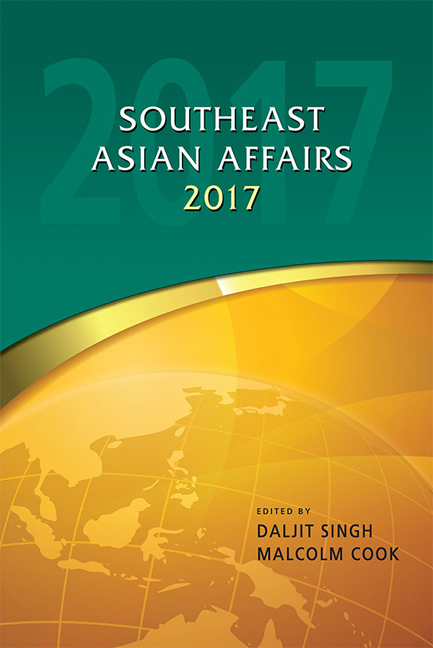Vietnam in 2016: Searching for a New Ethos
from VIETNAM
Published online by Cambridge University Press: 12 January 2018
Summary
Vietnam in 2016 went through a crucial leadership transition at the 12th Congress of the ruling Vietnamese Communist Party in January. Its economy stands at a crossroads, after thirty years of doi moi, or renovation, turned Vietnam into a lower-middle-income country with a thriving manufacturing-based, export-led economy, but which still leaves much to be desired. Vietnam still occupies the lower end of the global supply chain, and remains bridled with a largely inefficient state-owned sector and a weak financial sector. The government, however, aspires to achieve “modernity, industrialization, and a higher quality of life” by the year 2035, when Vietnam will have been reunified for sixty years.
On the international front, Vietnam has forged a wide range of partnerships with foreign countries — including with both neighbouring countries and larger powers — and has managed to redefine its relations with the West, in particular the United States. Yet it faces ever more complex foreign policy challenges, which emanate primarily from an increasingly aggressive posture by China in the South China Sea — where Vietnam is an active claimant in the maritime territorial disputes — and an evolving regional order. The leadership and populace alike seem to be looking for a game changer that can help address the host of geostrategic and socio-economic challenges facing Vietnam. If the past thirty years were foundational in Vietnam's charting of its post-war history and the terms of its relations with the outside world, the period from 2016 onward is slated to usher in a new, more dynamic era in this country of nearly a hundred million.
Leadership Transition and Contest
After a decade of freewheeling politics under the controversial former Prime Minister, Nguyen Tan Dung, large parts of Vietnam's leadership preferred to return to an equilibrium in domestic politics where collective leadership, the unwritten rule of Vietnamese politics, was the norm. Political infighting has always existed among the elite, and competition to varying degrees between the country's top four posts — Party Chief, President, Prime Minister, and Head of the National Assembly — is not a new phenomenon. But during his rule, Dung's relentless pursuit of power and personal wealth, as well as his outspokenness and brash rhetoric that defy the parameters of Vietnamese politics, alienated many within the party leadership and bureaucracy.
- Type
- Chapter
- Information
- Southeast Asian Affairs 2017 , pp. 407 - 420Publisher: ISEAS–Yusof Ishak InstitutePrint publication year: 2017



